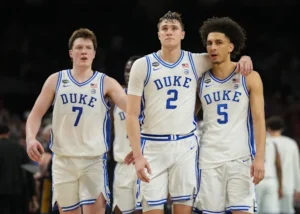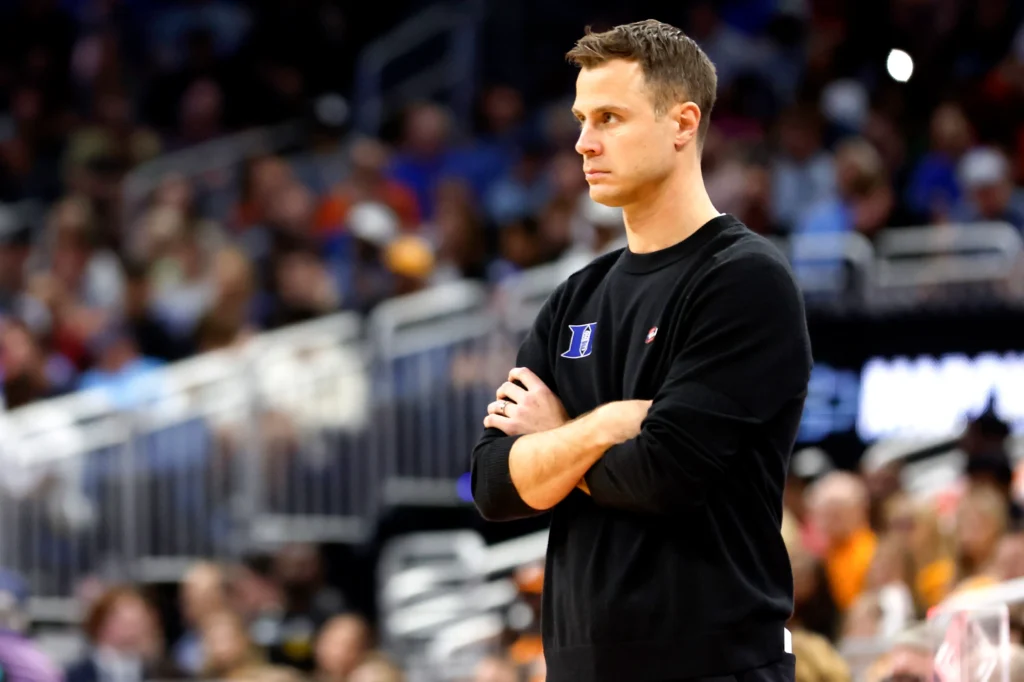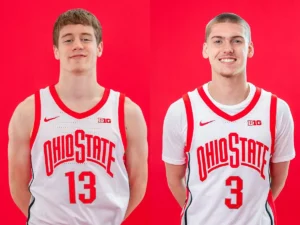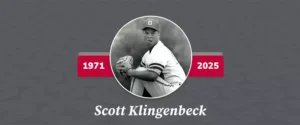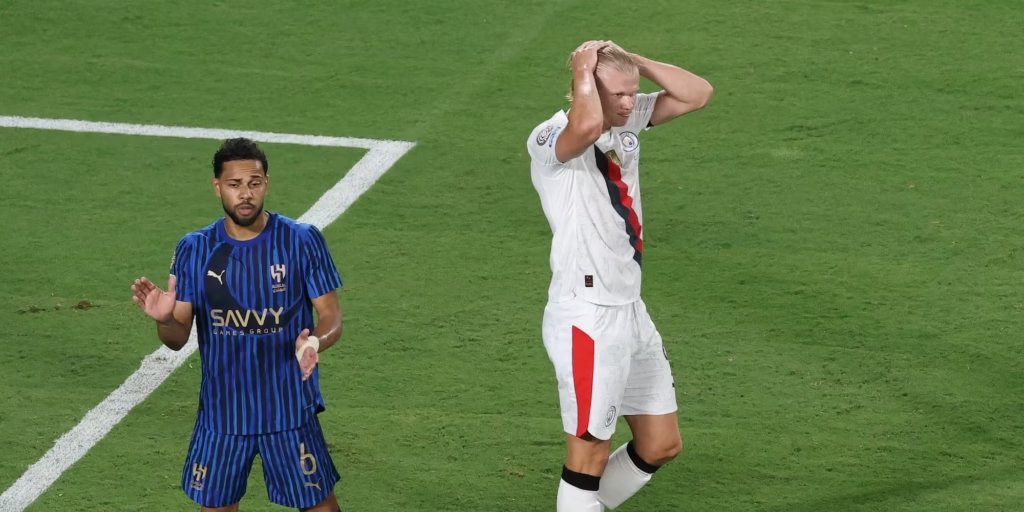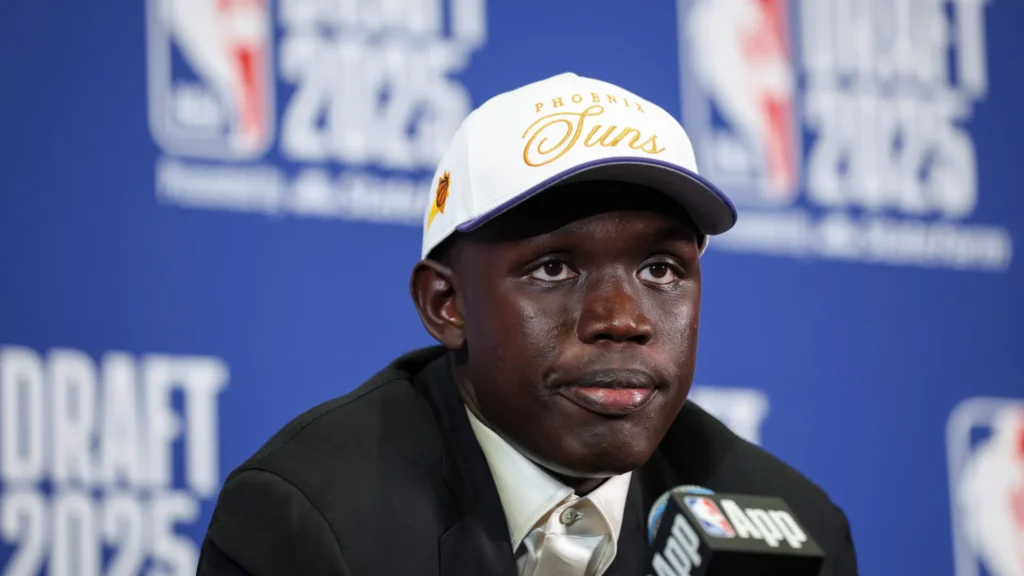
In the fast-paced, ever-evolving world of the NBA, roster moves, trades, and draft selections often serve as the building blocks for a team’s future. The 2025 NBA Draft, full of exciting prospects, was no exception, with the Houston Rockets making waves with their selection of Khaman Maluach, a talented forward from Duke University. Although the Rockets drafted Maluach with the 10th overall pick, the young prospect’s journey in Houston would be brief. After a series of trade discussions, the Rockets ultimately sent Maluach to the Phoenix Suns, signaling both a potential change in direction for Houston and a chance for the player to make an impact with his new team.
The draft selection of Khaman Maluach was seen as a bold move by the Rockets, who were looking to add a versatile, athletic forward to complement their young core. Maluach, who had a standout freshman season at Duke, was considered one of the most exciting players available in the 2025 NBA Draft. Known for his combination of size, length, and agility, he had the potential to develop into a two-way player capable of contributing on both ends of the floor.
At 6’9” and 225 pounds, Maluach’s physical profile alone stood out among other prospects. He had the frame to guard multiple positions, with the quickness and lateral mobility to defend on the perimeter. Offensively, Maluach showcased the ability to stretch the floor with his outside shooting, but also had the explosiveness to attack the rim and finish in transition. His basketball IQ, honed under the tutelage of Duke’s coaching staff, further solidified his status as one of the most promising forwards in the draft class.
During his one season at Duke, Maluach showed flashes of brilliance. Averaging 15.3 points, 7.1 rebounds, and 2.3 assists per game, he demonstrated his ability to contribute across various aspects of the game. His performances were particularly notable in key matchups against top-tier competition, where he showcased his poise and ability to perform in high-pressure situations. Duke’s run in the NCAA tournament also provided Maluach with the stage to further prove his worth, with his defense and scoring providing an essential boost to the Blue Devils’ success.
With Maluach’s potential and versatility, many scouts saw him as a player who could seamlessly fit into a modern NBA system, one that values positional flexibility and two-way players. The Houston Rockets, who had spent the past few years rebuilding their roster around young talent, were in need of a player like Maluach. With a core of promising stars such as Jalen Green, Jabari Smith Jr., and Alperen Şengün, the Rockets were poised to make a leap in the standings, and Maluach’s addition seemed like the final piece to a growing puzzle.
Houston’s decision to draft Maluach was seen as an effort to continue its rebuilding project, but also to accelerate the timeline for returning to playoff contention. In many ways, the selection of Maluach was a signal that the Rockets were looking to become a more versatile, defensive-minded team, while also providing the young players on the roster with a capable leader who could contribute immediately. However, as is often the case in the NBA, the trajectory of young players is never a guarantee, and Houston quickly found itself in discussions with other teams interested in the potential of the 10th overall pick.
After the draft, speculation began to grow about Maluach’s future in Houston. While the Rockets were excited about his potential, they also understood that they had an opportunity to capitalize on his value in the trade market. The Suns, another team in the Western Conference looking to bolster their roster, emerged as a frontrunner in trade talks for Maluach. Phoenix, which had already made significant moves to contend in the playoffs, saw the young forward as a potential long-term piece to complement their established core, including Devin Booker, Kevin Durant, and Deandre Ayton.
The trade that ultimately sent Maluach to Phoenix was finalized in the days following the draft, with Houston acquiring additional assets in exchange for the forward. While some Rockets fans were disappointed to see the promising prospect leave the team so soon, many also understood the logic behind the move. The Rockets, who were still in the process of developing their young players, realized that they might not have the immediate need for a player like Maluach at that moment. In contrast, the Suns, who were in “win-now” mode, saw Maluach as a player who could grow into a key contributor over time, while also offering them valuable depth at the forward position.
For Maluach, the trade to Phoenix represented both a fresh start and an exciting new opportunity. The Suns, coming off a successful season and with championship aspirations, were the perfect environment for a young player looking to prove himself. Under the guidance of head coach Monty Williams, Maluach would have the chance to develop alongside some of the league’s best players. Phoenix’s veteran leadership, including the likes of Booker and Durant, would provide Maluach with the mentorship necessary to accelerate his growth and refine his skills.
One of the key reasons the Suns were so interested in Maluach was his two-way potential. Phoenix had built a reputation as one of the league’s top defensive teams, and Maluach’s ability to guard multiple positions and create disruption on defense fit perfectly into their system. His length and athleticism would make him a valuable asset on that end of the floor, where he could use his lateral quickness to lock down perimeter players or his length to contest shots at the rim. On offense, Maluach could serve as a versatile forward capable of spacing the floor, driving to the basket, and even running the fast break. His adaptability to different roles made him an ideal fit for a team like Phoenix, which relied on flexibility and multiple scoring options.
As for the Rockets, the decision to part with Maluach opened up the door for them to further refine their roster and focus on players who could contribute immediately. Houston was in a unique position where it had the flexibility to trade away younger assets without losing its long-term vision. The Rockets had already built a solid foundation with their core players and could now afford to explore other avenues for improvement, whether through trades, free agency, or further draft picks.
The trade also demonstrated the Rockets’ commitment to making moves that would ultimately set them up for long-term success. While trading a promising young player like Maluach might seem like a step back for some teams, Houston’s front office had clearly mapped out a strategy for building around their existing stars. By moving Maluach, the Rockets were also giving themselves the opportunity to bring in players who might be a better fit for the current stage of their rebuild.
For Maluach, the transition to Phoenix represented a significant challenge, but one that could pay off in the long run. With a strong roster already in place, the Suns provided an ideal setting for Maluach to develop his game. The veteran leadership in Phoenix would undoubtedly help him refine his skills and elevate his understanding of the game, both of which would be essential as he looked to carve out a role in the NBA.
The move also highlighted the increasingly important role that young players and draft picks play in the NBA’s modern landscape. Teams that are in rebuilding phases, like the Rockets, are constantly looking for opportunities to acquire future assets that will help them sustain long-term success. In contrast, teams like the Suns, who are in win-now mode, are eager to add players who can contribute immediately. This delicate balance between building for the future and competing for championships is what drives much of the NBA’s offseason activity, and Maluach’s draft and subsequent trade is a prime example of that dynamic at play.
Ultimately, while Khaman Maluach’s tenure with the Houston Rockets was brief, it was a reminder of the unpredictable nature of the NBA. The trade to the Phoenix Suns could be the catalyst for a promising career, with Maluach developing into a key piece of the Suns’ championship aspirations. Whether in Houston or Phoenix, the young forward’s journey is one to watch closely, as he looks to live up to the potential that made him such a coveted prospect in the 2025 NBA Draft.
